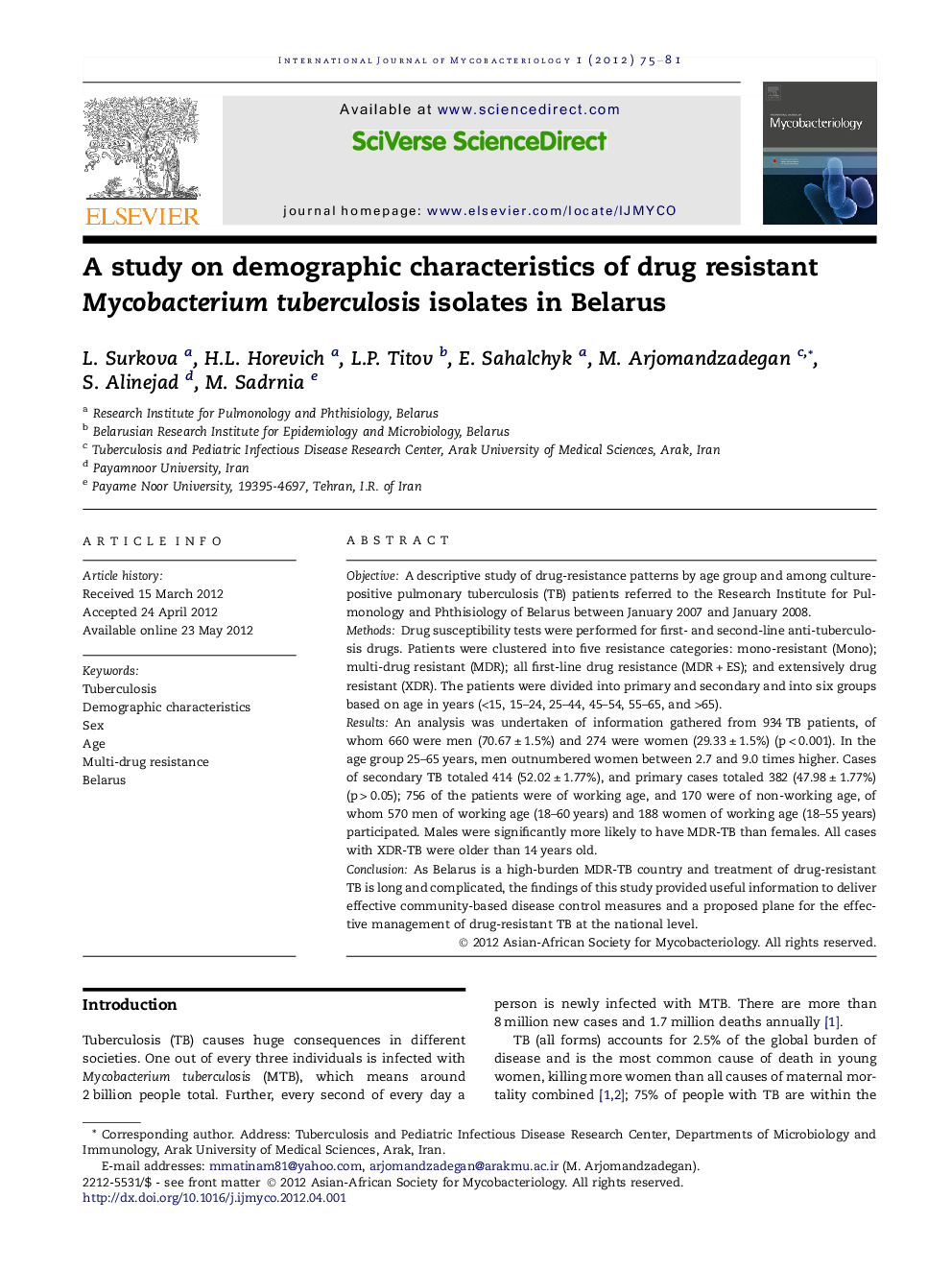| Article ID | Journal | Published Year | Pages | File Type |
|---|---|---|---|---|
| 3405279 | International Journal of Mycobacteriology | 2012 | 7 Pages |
ObjectiveA descriptive study of drug-resistance patterns by age group and among culture-positive pulmonary tuberculosis (TB) patients referred to the Research Institute for Pulmonology and Phthisiology of Belarus between January 2007 and January 2008.MethodsDrug susceptibility tests were performed for first- and second-line anti-tuberculosis drugs. Patients were clustered into five resistance categories: mono-resistant (Mono); multi-drug resistant (MDR); all first-line drug resistance (MDR + ES); and extensively drug resistant (XDR). The patients were divided into primary and secondary and into six groups based on age in years (<15, 15–24, 25–44, 45–54, 55–65, and >65).ResultsAn analysis was undertaken of information gathered from 934 TB patients, of whom 660 were men (70.67 ± 1.5%) and 274 were women (29.33 ± 1.5%) (p < 0.001). In the age group 25–65 years, men outnumbered women between 2.7 and 9.0 times higher. Cases of secondary TB totaled 414 (52.02 ± 1.77%), and primary cases totaled 382 (47.98 ± 1.77%) (p > 0.05); 756 of the patients were of working age, and 170 were of non-working age, of whom 570 men of working age (18–60 years) and 188 women of working age (18–55 years) participated. Males were significantly more likely to have MDR-TB than females. All cases with XDR-TB were older than 14 years old.ConclusionAs Belarus is a high-burden MDR-TB country and treatment of drug-resistant TB is long and complicated, the findings of this study provided useful information to deliver effective community-based disease control measures and a proposed plane for the effective management of drug-resistant TB at the national level.
